Rehab
For Rotator Cuff Injuries:
Acute
Phase
Physical
Therapy
Pain control and inflammation reduction are initially
required to allow progression of healing and initiation of an active
rehabilitation program in patients with a rotator cuff injury. This can be
accomplished with a combination of relative rest, icing (20 min, 3-4 times per
d), and acetaminophen or an NSAID. Have the patient sleep with a pillow between
the trunk and arm to decrease tension on the supraspinatus tendon and to
prevent blood flow compromise in its watershed region. Patients are instructed
to continue the pain control techniques at home, work, or vacation as part of
their exercise program. The home exercise program builds on itself through each
phase of the rehabilitation process, and carry-over should be monitored.
Other
Treatment
Corticosteroids delivered directly to the site via injection
can be considered to allow further progression of the rehabilitation program.
Place injections into the subacromial space, avoiding direct injection into the
rotator cuff tendon. Advise the patient to limit activity that involves
high-tensile loads (eg, maximal overhead throwing) for 2-3 weeks while the
tendon is potentially at risk after injection, particularly if the patient
exhibits rotator cuff muscle weakness. These injections need not be given to
patients with complete rotator tears, especially if surgery is being
considered.
Recovery Phase
Physical Therapy
The recovery phase from a rotator cuff injury must include several
components to be successful. These include the following: (1) restoration of
shoulder ROM, (2) normalization of strength and dynamic muscle control, and (3)
proprioception and dynamic joint stabilization.
Restoration of shoulder ROM
After the pain has been managed, restoration of motion can be initiated.
Codman pendulum exercises, wall walking, stick or towel exercises, and/or a
physical therapy program are useful in attaining full pain-free ROM. Address
any posterior capsular tightness because this can lead to anterior and superior
humeral head migration, resulting in impingement. Posterior capsular tightness
is common in athletes performing overhead motions (particularly throwers),
because the posterior muscles and capsule are greatly stressed during the
follow-through phase of the throwing motion. This activity places large eccentric
loads on the posterior capsule and posterior rotator cuff musculature and can
result in microtrauma and inflammation, followed by scarring and contracture.
Many overhead athletes have a great degree of external rotation with
restriction of internal rotation. This was once thought to be a normal
adaptation to the demands of the sport. The tight posterior capsule and the
imbalance it causes forces the humeral head anterior, producing shearing of the
anterior labrum and causing additional injury. Stretching of the posterior
capsule is a difficult task to isolate. The horizontal adduction that is
usually performed tends to stretch the scapular stabilizers and not the
posterior capsule. If care is taken to fix and stabilize the scapula, which
prevents stretching of the ST stabilizers, the objective of posterior capsule
stretching is obtained. The focus of treatment in this early stage should be on
improving range, flexibility of the posterior capsular postural biomechanics,
and restoring normal scapular motion.
Initially, ultrasonography to the posterior capsule followed by gentle
passive prolonged stretch may be needed. Closely monitor ultrasonography use to
avoid heating an inflamed tendon, which worsens the situation. Instruct the
patient about proper posterior shoulder stretches with the scapula fixed, which
should be performed after a period of aerobic exercise. Such exercise results
in increasing the core body temperature. The increase in core temperature makes
the tissues more extensible and allows for greater benefit from stretch. Each
stretch should be held for a minimum of 30 seconds, although stretching for 1
minute is encouraged. Postural biomechanics are important because poor posture
(eg, excessive thoracic kyphosis and protracted shoulders) increases outlet
narrowing, resulting in greater risk for rotator cuff impingement. Restoring
normal scapular motion is also essential because the scapula is the platform
upon which the GH joint rotates; thus, an unstable scapula can secondarily
cause GH joint instability and resultant impingement. Scapular stabilization
includes exercises such as wall push-ups and biofeedback (visual and tactile).
Strengthening
Perform strengthening in a pain-free range only. Begin with the ST
stabilizers. The scapular stabilizers include the rhomboids, levator scapulae,
trapezius, and serratus anterior. Shoulder shrugs, rowing, and push-ups isolate
these muscles and help return smooth motion, allowing normal rhythm between the
scapula and GH joint. Then, turn attention toward strengthening the rotator
cuff muscles. Position the arm at 45° and 90° of abduction for exercises to
prevent the wringing out phenomenon, in which hyperadduction can be caused,
stressing the tenuous blood supply to the tendon of the exercising muscle. Avoid
the thumbs-down position with the arm in greater than 90° of abduction and
internal rotation to minimize subacromial impingement.
Many ways to strengthen muscles are available. The rehabilitation program
usually starts with isometric and co-contractions, progresses to concentric
contractions, and finally incorporates eccentric contractions as part of the
preparation for return to sports. Using the baseball thrower example, the most
important muscle conditioning is that of eccentric control. Eccentric forces
are the most damaging to muscles, and if the patient is not fully rehabilitated
and conditioned, injury occurs or reoccurs. Additional strengthening techniques
that can be used are progressive resistive exercises (PREs), Thera-Band
(Hygienic Corporation; Akron, Ohio), and plyometrics. Use of isokinetic
exercises has been debated because they are not performed in a functional
manner. Probably the best use for isokinetic exercise machines is for objective
side-to-side comparison of strength and progress made in strength
rehabilitation. Incorporate endurance training into the program as it advances.
When strength is restored, continue a maintenance program for fitness and
prevention of reinjury.
Proprioception
Proprioceptive training is important to retrain neurologic control of the
strengthened muscles, providing improved dynamic interaction and coupled
execution of tasks for harmonious movement of the shoulder and arm. Begin tasks
with closed kinetic chain exercises to provide joint stabilizing forces. Then,
as the muscles become reeducated, one can progress to open chain activities,
which may be used in sports or tasks. Capsuloligamentous structures contain
sensory afferents, which respond to motion and changes in joint position,
whereas musculotendinous structures sense muscle length and tension. Injury can
affect these afferents, which require retraining much like restrengthening the
muscles. In addition, proprioceptive neuromuscular facilitation (PNF) is
designed to stimulate muscle/tendon stretch receptors for reeducation. In a
1965 report, Kabat described shoulder PNF techniques in detail.
[26]
Surgical Intervention
Indications for operative treatment of rotator cuff disease include
partial-thickness or full-thickness tears in an active individual who does not
have improved pain and/or function within 3-6 months with a supervised
rehabilitation program. An acromioplasty is usually performed in the presence
of a type II (curved) or type III (hooked) acromion with an associated rotator
cuff tear. Athletes with rotator cuff pathology secondary to GH instability
also need to have this addressed. In surgical candidates, early repair is
useful to avoid fatty degeneration and retraction of the remnant rotator cuff
musculature. Functional recovery should be stressed, and, in a patient who can
achieve pain-free activities of daily living in the setting of a rotator cuff
tear, surgical repair may be avoided. Surgeries including muscle transfers and
debridement are generally reserved for massive, irreparable rotator cuff tears.
A latissimus dorsi tendon transfer is one type of treatment for irreparable
rotator cuff tears that has demonstrated improvement in shoulder function,
range of motion, strength, and pain relief.
[27] Attempts to enhance
healing in rotator cuff repair have included the use of platelet-rich fibrin
matrix applied to the tendon-bone interface at the time of rotator cuff repair;
this technique, however, has no demonstrable effect on tendon healing or vascularity,
manual muscle strength, or clinical rating scales. Whether fibrin matrix is the
ideal substrate to enhance tissue healing remains unknown, and perhaps other
forms of growth factors may prove to be better at enhancing tissue healing
following surgery.
[28]
Maintenance Phase
Physical Therapy
Return to task-specific or sport-specific activities is the last phase of
rehabilitation. This phase is an advanced form of proprioceptive training for
the muscles to relearn previous activities. It is an important phase of
rehabilitation and should be supervised properly to minimize the possibility of
reinjury. Rehabilitation begins at a cognitive level but must be practiced so
that transition to unconscious motor programming occurs. All various phases of
shoulder injury rehabilitation may overlap and can progress as rapidly as
tolerated, but all should be performed to speed recovery and prevent reinjury.
At the conclusion of formal therapy sessions, patients should be independent
in an ROM and strengthening program and should continue these exercises,
initially under supervision and then completely on their own. A natural
tendency exists for patients to abandon the home program once they feel better;
however, patients must be encouraged to continue a maintenance exercise program
to prevent symptom relapse. Athletes are often tempted to return to their
overhead throwing sport too soon after recovery of the acute phase.
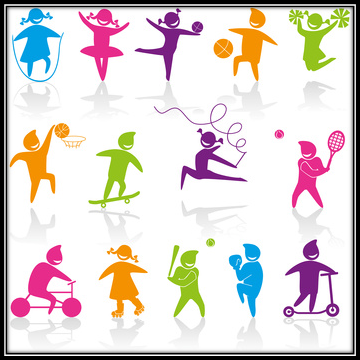 Getting your child involved in sports is an excellent way to encourage exercise and prevent childhood obesity. This is a proud feeling for every parent, and the expectation is that the child will have fun, gain confidence and interact with other children in the process.
Getting your child involved in sports is an excellent way to encourage exercise and prevent childhood obesity. This is a proud feeling for every parent, and the expectation is that the child will have fun, gain confidence and interact with other children in the process.
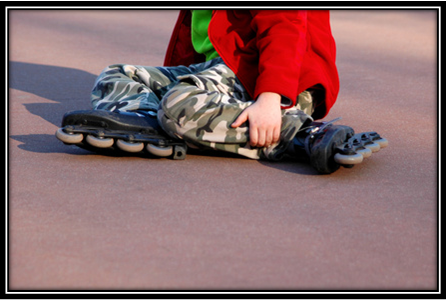 Specially trained in anatomy and physiology, a physical therapist will design a delicate, yet effective exercise program to help restore muscle balance and improve mobility in your child. The therapist will be aware of the child's limitations and will do everything possible to facilitate recovery as quickly as possible. Children tend to get restless during recovery, and a physical therapist will patiently work with the child to achieve compliance during the recovery process.
Specially trained in anatomy and physiology, a physical therapist will design a delicate, yet effective exercise program to help restore muscle balance and improve mobility in your child. The therapist will be aware of the child's limitations and will do everything possible to facilitate recovery as quickly as possible. Children tend to get restless during recovery, and a physical therapist will patiently work with the child to achieve compliance during the recovery process.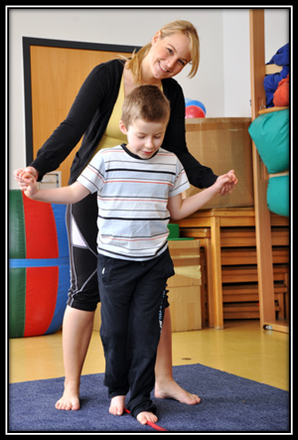 Although physical therapy can help children in the recovery process following an injury, there is a lot more that the therapist can do. As a parent, you can expect the physical therapist to use a variety of techniques to strengthen muscles and improve joint mobility. The therapist will make the exercises fun and interesting, and your child won't realize that he or she is 'being treated.' As a parent, you should encourage your child to participate and 'play along' with the treatment. The physical therapist may use play techniques including crawling, playing follow the leader, facilitating balance and coordination activities using beams, balls and other objects.
Although physical therapy can help children in the recovery process following an injury, there is a lot more that the therapist can do. As a parent, you can expect the physical therapist to use a variety of techniques to strengthen muscles and improve joint mobility. The therapist will make the exercises fun and interesting, and your child won't realize that he or she is 'being treated.' As a parent, you should encourage your child to participate and 'play along' with the treatment. The physical therapist may use play techniques including crawling, playing follow the leader, facilitating balance and coordination activities using beams, balls and other objects.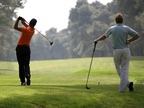
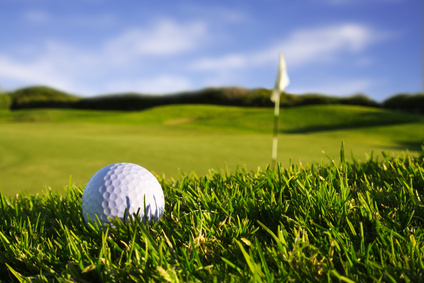
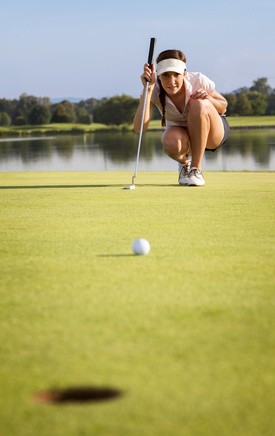
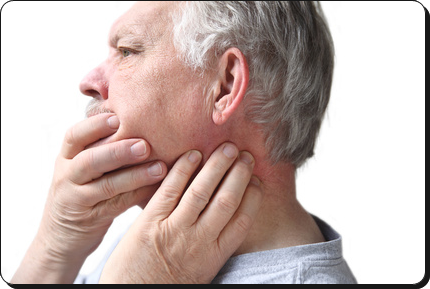 The temporomandibular joint (also known as TMJ) i
The temporomandibular joint (also known as TMJ) i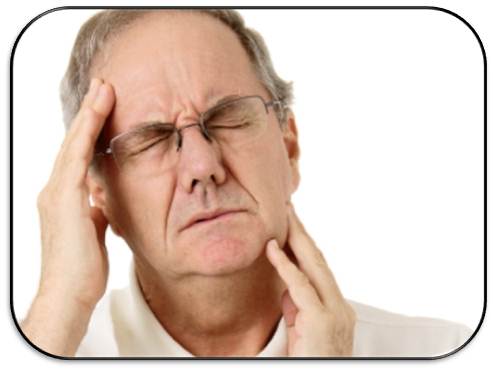 When muscle imbalance is a contributing factor, the TMJ
attempts to compensate for the misalignment. Normally, TMJ motion is smooth and
coordinated, allowing the jaw to move in several directions including side to
side, forward / backward and open / close. When the movement becomes imbalanced,
the result is increased strain on the ligaments and the muscles of the jaw. This
can lead to a number of symptoms including jaw and facial pain, clicking and
popping when opening and closing the mouth, difficulty opening the jaw, neck
pain and headaches.
When muscle imbalance is a contributing factor, the TMJ
attempts to compensate for the misalignment. Normally, TMJ motion is smooth and
coordinated, allowing the jaw to move in several directions including side to
side, forward / backward and open / close. When the movement becomes imbalanced,
the result is increased strain on the ligaments and the muscles of the jaw. This
can lead to a number of symptoms including jaw and facial pain, clicking and
popping when opening and closing the mouth, difficulty opening the jaw, neck
pain and headaches. A dentist can evaluate TMJ problems and may recommend a
dental appliance or dental work. However, if TMJ dysfunction is associated with
headache or pain in the jaw, neck or shoulders, ask for a referral to a physical
therapist.
A dentist can evaluate TMJ problems and may recommend a
dental appliance or dental work. However, if TMJ dysfunction is associated with
headache or pain in the jaw, neck or shoulders, ask for a referral to a physical
therapist.
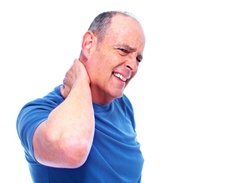 Each year, 2 million people suffer from whiplash
related to car accidents in the United States alone.
Each year, 2 million people suffer from whiplash
related to car accidents in the United States alone. In a study in the Journal of Rheumatology (2007),
a systematic review was performed of the existing literature on neck pain
related to car accidents. The evidence strongly supported the use of
stretching/strengthening exercises and mobilizations. Also, treatment with
physical therapy was less expensive in the long run
and reduced long-term disability compared to other treatment options.
In a study in the Journal of Rheumatology (2007),
a systematic review was performed of the existing literature on neck pain
related to car accidents. The evidence strongly supported the use of
stretching/strengthening exercises and mobilizations. Also, treatment with
physical therapy was less expensive in the long run
and reduced long-term disability compared to other treatment options. In most cases, the potential for recover is high,
especially with the right care as early as possible. A return to activity as
soon as possible helps significantly. Although symptoms may be around for a
while, the pain will improve within a few days or weeks. Be sure to continue
with the medicines prescribed by your doctor to aid with early movement.
In most cases, the potential for recover is high,
especially with the right care as early as possible. A return to activity as
soon as possible helps significantly. Although symptoms may be around for a
while, the pain will improve within a few days or weeks. Be sure to continue
with the medicines prescribed by your doctor to aid with early movement.


